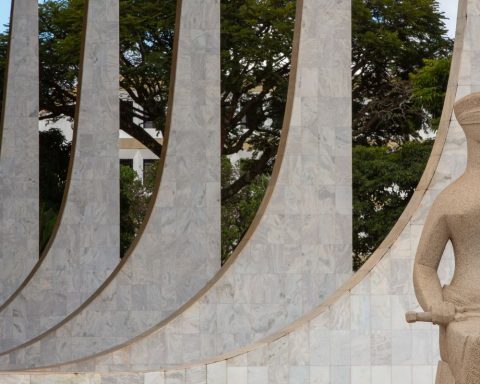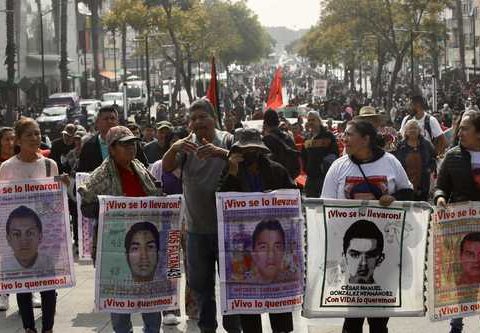In addition to securing an additional R$100 billion for the measures to be implemented, the new agreement To repair the damage caused by the collapse of a dam in Mariana (MG), almost nine years ago, it established a new resource governance model. At the same time, the agreement, signed this Friday (25), determined the extinction of the Renova Foundation, an entity that had been created in 2016 to manage the reparation process.
The dam that broke was part of a Samarco mining complex. The tragedy occurred on November 5, 2015. At the time, around 39 million cubic meters of waste flowed through the Rio Doce Basin. Nineteen people died and there were impacts on the populations of dozens of municipalities up to the mouth of Espírito Santo.
Until then, the reparation process had been conducted in light of the agreement signed in March 2016 between Samarco, its shareholders Vale and BHP Billiton, the Union and the governments of Minas Gerais and Espírito Santo. Known as the transaction and conduct adjustment term (TTAC), the agreement established a series of reparatory actions. The document dealt with various issues such as individual compensation, reconstruction of destroyed communities, environmental recovery and support for rural producers.
All measures of the more than 40 defined programs were being conducted by the Renova Foundation, created based on TTAC. His actions, however, had been the target of several criticisms due to the lack of solutions to several problems, which generated a liability of 85 thousand cases accumulated in the Brazilian Judiciary between collective and individual actions involving the tragedy. Negotiations for a renegotiation, with the expectation of reaching a new agreement, had been going on for three years.
With consensus finally reached, the Renova Foundation will leave the scene. The Interfederative Committee (CIF), composed of state and federal environmental agencies under the coordination of the Brazilian Institute of the Environment and Natural Resources (Ibama), is also extinguished. It had been created based on the TTAC to monitor and establish guidelines for the Renova Foundation’s operations.
Mining companies must pay, according to a schedule that extends over 20 years, a total of R$100 billion that will be allocated to a series of measures to be managed in a decentralized manner, with each signatory assuming a portion of responsibilities. Responsibilities were defined for the federal government and the governments of Minas Gerais and Espírito Santo. Part of the resources will also finance actions managed by the Justice institutions that signed the agreement, which includes the Federal Public Ministry (MPF) and the Federal Public Defender’s Office (DPU), in addition to the Public Ministry and the Public Defender’s Office of the two states involved.
For projects and actions managed by the Union, mining companies must make transfers to a private fund, called “Fundo Rio Doce”, established by the National Bank for Economic and Social Development (BNDES). It will be up to the federal government to conduct a series of measures involving income transfer; promoting education, science and innovation; strengthening the Unified Social Assistance System (SUAS); environmental actions and repair of fishing activities, among others.
The decentralization of execution also involves the mobilization of different structures of the federal executive administration. An economic recovery program, for example, will be the responsibility of the Ministry of Social Development and Fight Against Hunger. Actions to support rural producers involve the Ministry of Agrarian Development and Family Agriculture. Likewise, there are initiatives under the responsibility of the Ministries of Health and Fisheries and Aquaculture, among others.
The states of Minas Gerais and Espírito Santo must indicate accounts to receive resources related to projects under their responsibility. There are, for example, large-scale measures involving mobility. One of them is the duplication of the BR-356 highway, from the junction with BR-040 to the entrance to Mariana. The intervention will be costing R$2 billion. In Espírito Santo territory, works and interventions are planned on BR-262 at a cost of R$2.3 billion.
Social participation
R$5 billion were also secured for a Social Participation Fund, which will be aimed at the demands of affected communities. Monitoring the use of these resources, as well as defining the criteria for their allocation, will be the responsibility of the Federal Council for Social Participation in the Rio Doce Basin, which will be composed equally: 50% will be members of the public administration and 50% representatives of civil society.
The agreement also addresses the continuity of the work of technical advisors for those affected. These are entities chosen by the communities themselves to provide support in the reparation process. The hiring of entities, funded by the mining companies, is a right won after the tragedy, with the support of the MPMG and the MPF. These entities will continue to operate for at least another three and a half years, with the possibility of extending the period to four years. The technical advisors will share a budget of R$698 million. Those that have not yet been implemented should finally come out of the paper.
The R$100 billion also includes the commitment made by the mining companies to transfer the amount of R$493.5 million to the Union to compensate for losses accumulated by Social Security. As a result of the tragedy, many benefits had to be paid to affected workers. Furthermore, the collection of social security contributions from artisanal fishermen was interrupted, as they were unable to carry out fishing activities.
In addition to guaranteeing R$100 billion in new money, the agreement transfers to Samarco the responsibility for carrying out some measures directly, including individual compensation, reconstruction communities and the recovery of degraded areas and marginal lagoons, as well as the removal of waste accumulated at the Candonga Plant, the restoration of habitats water resources and reforestation actions on the banks of the Doce River. The costs of such initiatives were estimated by mining companies at R$32 billion. The agreement, however, makes it clear that there is no ceiling: it will be up to Samarco to prove the completion of each of the obligations.
The mining companies claim that, since the tragedy, they have already disbursed R$38 billion to fund actions developed through the Renova Foundation. These are values that are also declared on the entity’s portal. The new governance foresees the creation of a single portal, called Reparação Rio Doce. Everyone involved in the reparation process will be responsible for updating the data, thus allowing civil society to follow in detail each step of the implementation of the agreement.
Hit
The Movement of People Affected by Dams (MAB) recognized progress in the new agreement, although it criticized the conduct of negotiations, without the participation of victims. “This is not a time for celebration or commemoration,” the organization said in a statement. We are only here today because there was a crime committed by mining companies which killed 19 people and caused a forced abortion in one affected by the mud”, said Thiago Alves, who is part of the entity’s national coordination.
The values stipulated by the agreement were considered insufficient by MAB. The deadline for mining companies to complete all disbursements, set at 20 years, was also criticized. Even so, the entity positively highlighted the creation of collective action funds. “The movement will continue to fight for the rights of those affected, in memory of the dead and will remain firm, monitoring every line of this agreement.”
In a statement to the market, Vale highlighted that this is a definitive agreement that guarantees R$170 billion to repair the damage, considering the R$100 billion in new resources, the R$32 billion in actions to be implemented by Samarco and the R$38 billion already disbursed since the tragedy occurred. According to the mining company, substantial resources are guaranteed for improvements in health, sanitation, fishing activities and community financing.
“The definitive agreement addresses all demands involving the signatory Brazilian public authorities, related to the collapse of Samarco’s Fundão dam, including all socio-environmental damages and all collective and diffuse socioeconomic damages resulting from the rupture”, adds the text.


















